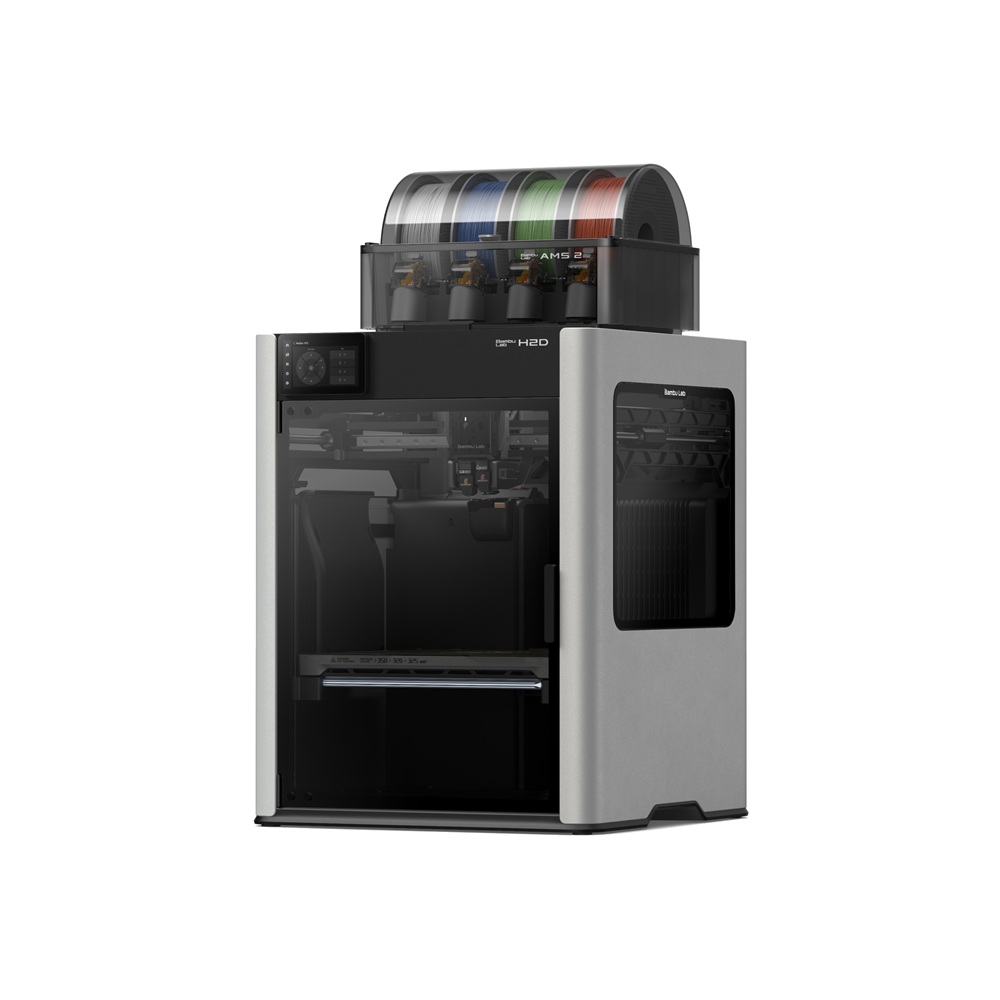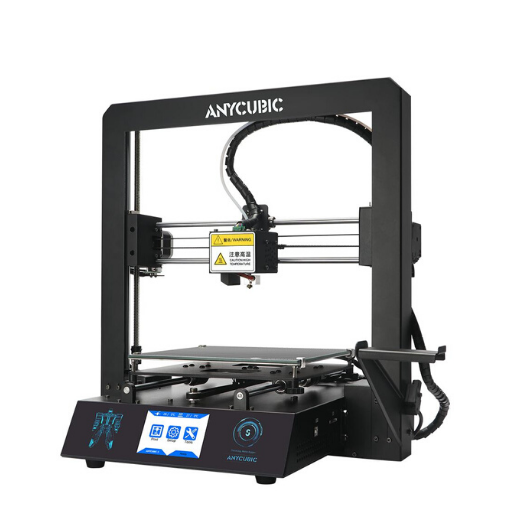Compare H2D vs Mega S
Comparison between the best 3D printers
Choose the best 3D printer at the best price. The cheapest 3D printers are here.
Buy a 3D printer here with 3D Fila.
 |
 |
|
| Model | H2D |
Mega S |
| Printing Material | Filament | Filament |
| Buy Filament for Bambu Lab H2D | Buy Filament forAnycubic Mega S | |
| Estimated price | $1899,00 | $149,00 |
| Manufacturer | Bambu Lab | Anycubic |
| Release Year | 2025 | 2019 |
| Print Volume [mm] | 350x320x325 | 210x210x205 |
| Printer Size [mm] | 492x514x626 | 405x410x452 |
| Weight [kg] | 42,3 | 14,5 |
| Power Loss Recovery | YES | YES |
| Enclosed printer | YES | NO |
| Bed Leveling | Automatic | Manual |
| Filament End Sensor | YES | YES |
| Bed type | Heated | Heated |
| Power supply system | Direct Drive | Bowden |
| Standard nozzle | 0,4 | 0,4 |
| Maximum Nozzle Temperature [°C] | 350 | 260 |
| Maximum Bed Temperature [°C] | 120 | 110 |
| Maximum printing speed [mm/s] | 600 | 100 |
| Filament holder | YES | YES |
| Camera for supervision | YES | YES |
| Recommended filaments | PLA, PETG, ABS, ASA, TPU, PVA, Nylon (PA) | PLA, TPU, ABS, PETG |
| Recommended slicers | Bambu Studio | Cura, Simplify, Slic3r |
| Maximum Resolution [mm] | 0,01 | 0,1 |
| Processor | 8 bits | |
| Display | Touchscreen 5'' | Touchscreen TFT 2,8'' |
| Power Supply | 12V / 300W | |
| Connectivity | Wifi, Bambu bus, Cartão SD | SD / USB |
| Operating systems | Windows, Mac, Linux | Windows, Mac, Linux |
| Date of registration in the system | 2025-03-31 | 2021-04-15 |
| Release date | 2025 | 2019 |
| Extra features | Bambu Labs H2D combines high-speed 3D printing with a chamber heated up to 65 °C, dual extrusion with automatic nozzle switching, an AMS for filament drying and exchange, and AI sensors that detect failures. It offers optional laser and digital cutting capabilities, features intelligent calibration through computer vision, vibration control, enhanced fire safety, and real-time camera monitoring. | The Anycubic Mega S offers a printing platform with excellent adhesion, easy removal after cooling. It has a filament sensor for a better experience with flexible materials and a multilingual and intuitive color touchscreen. Assembly is quick, requiring only 8 screws and 3 connections. It has a large build volume (210 x 210 x 205 mm), high positioning accuracy and supports a variety of materials, including TPU, PLA, ABS and wood. It stands out for its solid metal structure, superior stability, high-quality printing with layer resolution of up to 50 microns, Ultrabase for easy adhesion and removal of parts, resumption of printing after power outage, high-quality extruder for flexible filaments, suspended filament support and stable structure that reduces shaking, improving printing quality. |
| Support for multiple colors and materials (AMS and CFS) | YES | NO |
Notes * |
||
| Cost-benefit | 7 / 10 | 7 / 10 |
| Hardware | 8 / 10 | 2 / 10 |
| Tela | . | . |
| Print volume | 4 / 10 | 3 / 10 |
| Performance | 5 / 10 | 1 / 10 |
Conclusion |
| In conclusion, the Bambu Lab H2D and the Anycubic Mega S present distinct offerings for 3D printing enthusiasts, each catering to different needs and budgets. The H2D, while significantly more expensive, boasts advanced features such as a large print volume, high resolution, and automatic bed leveling, making it ideal for more experienced users seeking high-speed, high-quality outputs with a diverse range of materials. Its enclosed design and advanced sensors also contribute to better printing stability and safety. On the other hand, the Anycubic Mega S provides a more accessible entry point for those new to 3D printing or on a tighter budget. It offers a solid build quality and a user-friendly experience, although it lacks many of the advanced features of the H2D. The Mega S is well-suited for hobbyists and casual users who require reliable performance without needing the cutting-edge capabilities of more expensive models. Ultimately, the choice between the two depends on the user's printing volume requirements, experience level, and budget. The H2D is geared toward professionals or serious enthusiasts, while the Mega S serves as a practical option for beginners and casual makers. |

